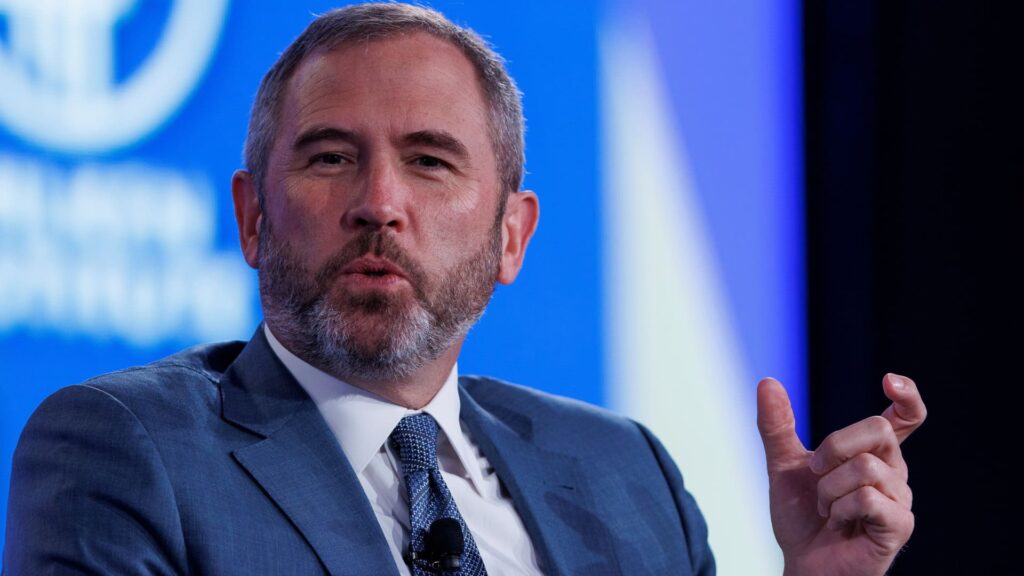
Ripple Labs has become one of the largest cryptocurrency companies in the world, but executives aren’t stopping there, CEO Brad Garlinghouse told CNBC. Over the past year, the company has redoubled its efforts to bridge the world of Web3 and an industry that has long been considered its flagship: traditional finance.
In an interview with CNBC’s “Crypto World” at the Ripple Swell 2025 conference in New York, Garlinghouse said his company aims to offer a broad range of traditional financial services built on blockchain infrastructure, capitalizing on the growing institutional adoption of digital assets.
A blockchain is a decentralized digital ledger that records transactions across a network of computers.
“I want to see Ripple invest in (the) future and anticipate where the market is going,” Garlinghouse said Tuesday. “The assets we purchased fall into the traditional financial sector, so we can bring crypto solutions to this traditional financial world.”
Aimed at finance-focused businesses
Ripple has embarked on a nearly $4 billion acquisition spree in hopes of building a financial services powerhouse, buying prime brokerage Hidden Road in 2025 alone for nearly $1.3 billion in April and software company GTreasury for more than $1 billion this fall. Last week, it launched Ripple Prime, a brokerage that will provide U.S.-based institutions with over-the-counter spot market access across multiple tokens, raised $500 million in new funding and grew its market value to $40 billion.
Ripple’s attempt to deepen its presence in traditional finance comes as institutional demand for digital assets increases. The Securities and Exchange Commission and the Commodities Futures Trading Commission this year dialed back regulation of digital assets under the presidency of Donald Trump, a self-styled champion of crypto.
Bank of America And Citi Group have begun actively exploring stablecoins, with Citi recently revealing plans to launch a crypto custody service for clients in 2026. JPMorgan in June, it announced plans to introduce a stablecoin-like “custodial token” on top of Coinbase’s public blockchain. Beyond dollar-pegged tokens, institutional investors have invested billions of dollars in spot Bitcoin ETFs since their U.S. debut in January 2024.
“The United States used to rely on crypto, and now we’re leaning into it, and I think people are underestimating the magnitude of this change” and its likely impact on the entire crypto market, Garlinghouse said.
Institutional integration
In addition to developing its own services, Ripple also aims to sign deals to lend its XRP Ledger technology to large institutions’ crypto efforts, according to Garlinghouse.
Such partnerships could prove a boon for XRP, the native token of the XRP Ledger, a decentralized blockchain intended to ensure fast and low-cost transactions.
“The more we can create utilitarian, truly scalable solutions that leverage XRP at the core, the more that will be particularly beneficial to the XRP ecosystem,” Garlinghouse said.
XRP has traded sideways for much of 2025, although ether And bitcoin reached all-time highs of around $3,900 and $126,000, respectively.
But even though high-profile partnerships could boost the price of
The crypto industry lobby once hoped that lawmakers would pass a sweeping digital asset market structure bill called the Clarity Act before the end of the year.
But as the U.S. government shutdown is about to enter its sixth week, efforts to establish legislative guidelines for the industry have ground to a halt.
“Until we get that green light, it’s going to be difficult,” Garlinghouse said. “Banks are looking for and needing that clarity to really be able to integrate.”




